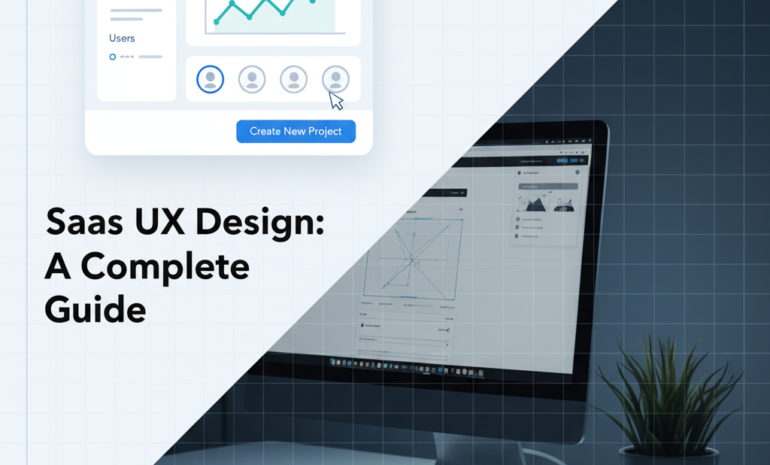Finding the right web design company may take time, but it helps you avoid stress later. A well-designed website builds trust and keeps visitors interested.
One mistake many people make is rushing into deals without checking the company’s process, quality, or communication.
To choose the best web design company, you need to ask the right questions and focus on what truly matters.
This article gives you ten helpful tips to guide your search. Use them as a checklist while reviewing different companies.
When you know what to look for, making the right choice becomes easier and more effective.
Why Is an Agency Better Than In-House?
Choosing an agency gives you access to a full team of experts without the need to hire each person individually.
In-house teams may be limited in skills or resources, especially for small businesses. An agency offers fresh ideas, proven experience, and updated tools.
They work with different industries, so they know what works and what does not. Agencies also stick to timelines because they are used to handling multiple projects at once.
For businesses that need quality work without long-term staff costs, an agency is often the smarter choice.

10 Tips to Find the Best Web Design Company for Your Needs
Here are some practical steps to help you start your search with clarity. Before choosing any web design company, it is important to know what you really want. A clear direction from the beginning makes everything else much easier.
Define Your Website Goals First
Every business has different needs. Some want to sell products, while others need to display services or collect leads.
Before reaching out to any web design company, sit down and write your main goals. Do you want people to fill out a contact form, call your business, or make purchases?
A clear purpose gives the design team a direction. Without it, the project can go off track. This step helps you save time and avoid repeated changes later on.
Make a List of Must-Have Features
Think about the tools and features your website needs. You might want live chat, a booking system, product filters, or payment methods. Write everything down so you do not forget it during meetings.
Having this list helps you explain what you expect and allows the company to suggest the best ways to achieve it.
It also helps in getting more accurate quotes. Without knowing what you want, the design can lack important parts.
Review Their Portfolio Like a Customer
Every company shows its best work in its portfolio. But instead of just looking at designs, go deeper.
Visit those websites and explore them like a real user. Is the site fast? Does it look good on a mobile phone?
Is it easy to navigate? A pretty homepage does not mean the rest of the site works well.
When you test the sites yourself, you get a better idea of the company’s real work and skill level.
Check Their Experience in Your Industry
A company that has worked with similar businesses will understand your needs better.
For example, if you run a salon, a team that has built salon websites before may already know what works for your audience.
Ask them if they have worked on websites like yours. Check if those websites are still running and how they perform.
Familiarity with your industry saves time because the company needs less explanation to understand your customers.
Ask About Their Design and Development Process
Knowing how a company builds a website is important. Ask them about their process from the first meeting to the final launch.
Do they send regular updates? Will you get a chance to give feedback on the design? Do they have steps in place for testing the site before it goes live?
A company with a clear step-by-step method will keep you informed and avoid delays. Vague answers may lead to confusion and missed deadlines.

Pay Attention to Their Communication Style
You will be in touch with this team for weeks or even months. If they take too long to reply or use confusing language, it creates problems.
Good communication builds trust and avoids mistakes. Ask how often they provide updates.
Do they prefer email, calls, or project tools? Choose a company that matches your communication style.
It is better to work with people who respond clearly and quickly rather than those who leave you guessing.
Confirm Their Understanding of SEO and Speed
Your site should look nice, but it must also be easy to find and fast to load. Ask the company how they handle search engine basics like proper headings, image sizes, and clean coding. Also, ask about mobile speed and security.
Many web designers focus only on looks, but speed and visibility matter just as much.
If they cannot explain how they handle these technical parts, they might not be the best fit for your needs.
Read Reviews and Talk to Their Past Clients
What others say about a company can tell you a lot. Look for client reviews on Google, Facebook, or other platforms. If possible, contact one of their past clients.
Ask them if the project finished on time and how the company handled changes or problems.
This step gives you real feedback from people who have already been through the process. It is more useful than just reading the company’s promises on their own website.

Compare Pricing and Understand What’s Included
Never accept a price without knowing what it covers. Some companies offer basic designs, while others include SEO setup, content writing, or after-launch support.
Ask for a complete breakdown of what you will get. Will you be charged for revisions?
Is hosting included? Are there extra fees for mobile responsiveness? Comparing pricing only makes sense if you know what each package contains.
Clear details help you avoid budget surprises halfway through the project.
Choose a Team That Fits Your Working Style
Technical skills matter, but comfort also plays a big role. Choose a team that listens to you, respects your time, and stays open to your ideas.
If you feel uneasy after the first few talks, it might not be the right fit. A smooth working relationship can make even a tough project feel easier.
When the team understands your business and works the way you do, the final result usually turns out better.
Questions To Ask When Choosing A Web Design Agency
Before hiring any web design agency, prepare a list of questions that help you understand how they work.
Ask about their experience with similar projects, their design process, and how they handle revisions.
Find out what tools they use for communication and how they manage deadlines. It is also important to ask about post-launch support, SEO practices, and website security.
These questions give you a clear picture of their professionalism and how they treat their clients.
Choosing without asking may lead to missed expectations and unnecessary stress.

Asking the right questions helps you avoid surprises later. It gives you a deeper understanding of what the company offers and how they handle real projects.
Many people skip this step and end up working with teams that do not match their needs.
Questions about timelines, design choices, technical skills, and customer support help you compare companies more fairly.
It also shows you how open and honest they are in their answers. A team that explains things clearly is more likely to be dependable throughout the project.
Why Choose BrandOut for Your Web Design Needs
BrandOut designs websites that look clean and perform well across all devices. Their team provides UX and UI design services to make sure each site is easy to use and fits your brand style.
They focus on speed, mobile readiness, and smooth layouts that help visitors take action. From planning to launch, you get clear updates and a simple process from start to finish.
Ending Lines:
Finding the best web design company becomes easier when you follow the right steps. A strong website needs more than just good visuals.
It needs a clear purpose, reliable speed, and a team that understands your goals. Spend time reviewing portfolios, checking reviews, and asking questions.
These tips can help you avoid wrong choices and choose a team that fits both your needs and your comfort. In the end, a well-chosen partner saves effort and delivers better results.
Commonly asked questions:
What are the 4 C’s of Website Design?
The 4 C’s of website design are Clarity, Consistency, Content, and Creativity. Clarity makes it easy for users to understand your message.
Consistency helps users move through your site without confusion. Strong content provides value and keeps people engaged.
Creativity gives your site a unique feel that sets it apart. Together, these four elements create a user-friendly and effective website that leaves a lasting impression.
What are the Five Golden Rules of Web Designing?
The five golden rules are: Keep it simple, Make it fast, Design for mobile, Use clear navigation, and Focus on user needs.
A simple layout keeps the site clean. Fast loading pages hold attention. Mobile-first designs work better on all devices.
Easy navigation lets users find what they want. Most importantly, every part of the website should support the visitor’s goals, not just look good on the screen.
Where to Find Clients for Web Design?
Web design clients can be found on freelance platforms like Upwork and Fiverr, as well as through LinkedIn and Facebook business groups.
You can also approach local businesses directly or offer services to startups and online sellers. Networking at events and partnering with marketing agencies helps too.
Building a strong online portfolio makes you easier to trust. Always keep your communication clear and your services easy to understand for potential clients.
How Do I Get My First Web Design Client?
Start by creating a few sample websites for practice or offer your services to a friend or local business at a discount.
Build a portfolio, even if it includes unpaid work. Share your work on social media, LinkedIn, and freelance job sites.
Make sure people know you are available. Be confident and reach out directly to small businesses with clear offers. The first client often comes from personal contacts or word of mouth.
How to Market Your Web Design Business?
Begin with a clean website that shows your work, skills, and services. Use social media to share client results, design tips, and short case studies.
Post regularly on LinkedIn and Facebook groups where business owners hang out. Write blog posts or short videos that explain how your design solves problems.
Offer limited-time discounts or free consultations. When your message stays simple and your work stays useful, more people start paying attention.




